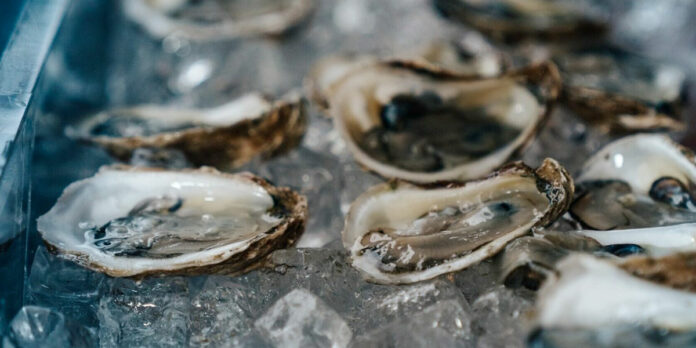We’re entering prime time to enjoy freshly-shucked Alabama oysters on the half shell. Although local oysters are in season year-round, they reach their peak in flavor and size when the water is cooler, from October through winter.
“This time of year, I notice the oysters are more plump, firm, and creamy,” Anthony Ricciardone, co-owner of the Admiral Shellfish Co. offshore farm near Fort Morgan, once told me. “They’re building up for winter.”
Admiral is one of more than a half-dozen Alabama aquatic farms that grow and harvest oysters in the bays and estuaries where freshwater meets the salty Gulf of Mexico. The oldest farm, Point aux Pins, submerged its first commercial crop in 2009.
A specialty premium product, farmed oysters are designed to be served raw, in deep-cupped shells that hold plenty of liquor with the meat.
Alabama’s oyster farming industry is the byproduct of the Auburn University Shellfish Laboratory and Bill Walton, one of its marine scientists. It helps train would-be farmers, provides ongoing advice and research, and even has been a source for seed oysters.
The university’s shellfish lab, which is based on Dauphin Island, helped adapt an environmentally sustainable farming method using cages held relatively close to the water surface. The crop is regularly air-dried to get rid of barnacles, algae, and other contaminants.
All wild and farmed oysters along the Atlantic Ocean and Gulf are the same genus and species, generically known as the Eastern Oyster. But each develops a distinct flavor and even shell shape from its environment – the salinity, temperature, nutrients, and wave action in the coves and inlets where they grow.
The saltier the water, the saltier the meat. Cooler waters produce firmer oysters. How the waves hit the oyster cages, with an extra boost from being tumbled by the farmer, affects the shape of the shell.
“We invest a lot of time in custom-crafting the shell so you get a flatter top and a deeper cup,” Ricciardone says. “That has to do with how frequently we handle and tumble them. Bivalves want to grow on their lip. Every time we chip that lip, it tells the oyster to start creating a cup.”
Oyster farmers choose sites off undeveloped land to avoid ground-pollutant runoff. They hand-harvest when the oysters reach optimal size, resulting in a more uniform product that looks great on the plate. Commercial harvesting often involves dredging whatever is in the path.
Those are all factors in why chefs and quality fishmongers turn to farmed oysters to serve on the half-shell. Menus where they routinely appear name the oyster farm, like the now-familiar lists of growers that provide the vegetables, fruit, and steaks.
When an oyster craving hits, look for these Alabama farms. All should be available at the Experience the Oyster fest on Nov. 3-4 at The Hangout in Gulf Shores.
- Admiral Shellfish (Gulf Shores)
Clean and subtle, they are briny with a savory creaminess, says co-founder Anthony Ricciardone. - Bayou la Batre Oyster Farm (Bayou la Batre)
“The perfect mixture of fresh and saltwater in the bay allows our oysters to develop a unique salty flavor,” the company’s website says. - Grand Batture Oysters (near the state line with Mississippi)
“The Escatawpa River Delta flows cool, nutrient-rich water into Sandy Bay and its saltwater marshes,” the company says, “giving the oysters … a balanced salty taste with a tender and smooth texture, followed with a mineral finish!” - Massacre Island Oysters (Dauphin Island)
“Sturdy shell with plump pearly meat,” according to the company’s description. “Beautiful brine. Earthy light herb (flavor). Finish is sweet shrimp. Dense tofu texture. - Murder Point Oysters (Orange Beach)
Perhaps the most popular boutique oyster farmed in Alabama, these “oysters worth killing for” (a company motto) feature a uniquely creamy, even buttery taste, says the Alabama Gulf Seafood Commission. - Navy Cove Oysters (Gulf Shores)
“With a plump profile, a sweet flavor, and moderate saltiness, you’re in for a treat,” says the seafood commission. “They even feature a signature ‘racing stripe’ across the shell.” - Point aux Pins (Grand Bay)
The farm describes the flavor as “clean, light on brine and big on oysterness, … the perfect blend of meaty, salty, and creamy.”
Don’t miss out! Subscribe today to have Alabama’s leading headlines delivered to your inbox.
